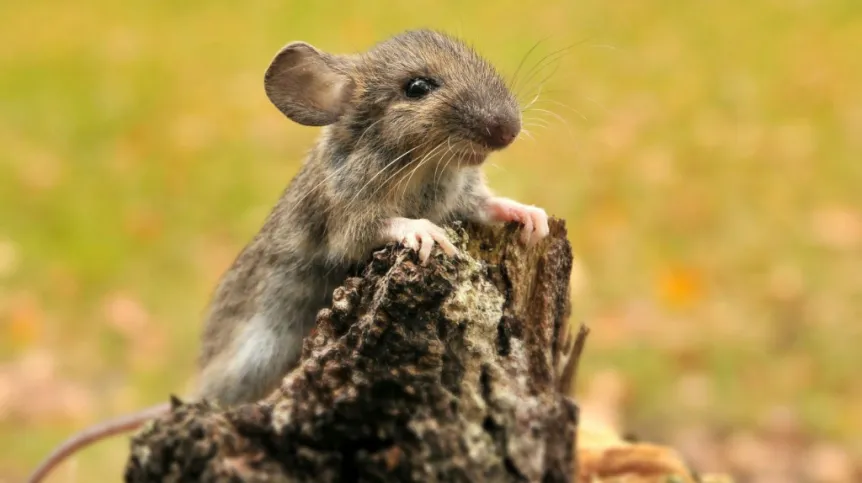
Individual animals of the same species, both domesticated and wildlife, may behave differently in the same situation, according to the concept of the so-called "animal personality". It is possible that these differences affect ecosystems. The research on this topic is conducted by Dr. Rafał Zwolak.
Differences in the disposition of animals are visible to the naked eye - any owner of a dog, cat or other domestic pet will probably agree with this statement. Interestingly, this applies not only to domesticated animals. A large variability of behaviour can be observe also in animals living in the wild - even within one species. Its individual representatives may, for example, vary in degree of aggression, boldness or willingness to explore the environment. Although until recently it has been thought that focusing on such differences would be unscientific, they have now become a subject of intense research.
Where did such behaviour differences come from? How do they affect the lives of animals and their environment? These are some of the issues explored by Dr. Rafał Zwolak, a biologist at the Adam Mickiewicz in Poznań. In his research, he uses the concept of animal personality.
"When we speak of animal personality, we mean constant tendencies for specific behaviours that are independent of the situation. This means that a given individual may behave aggressively when it meets a predator - but also when it meets a competitor of his own species" - Dr. Zwolak explained in an interview with PAP. "When studying the personality of animals, we also focus on the correlation between the different behaviours, that is, the aspects of an animal\'s personality that often occur together. For example, high aggression can be associated with a high propensity for exploration, and low aggression is correlated with the fact that those individuals move less, they explore the environment more slowly" - he said.
One of the biggest puzzles scientists face in the study of animal personality is the question why such differences have developed in the evolutionary process. "Until recently, it was assumed that the behaviour of animals was completely plastic and shaped by thousands of years of natural selection in such a way that each individual may behave in the best possible way at any given moment" - the researcher explained. "It was thought that these behaviours would change primarily depending on the situation, for example: if we meet a predator, it better not to be aggressive, but if we meet a competitor of our own species - then it is worth it to +turn on+ this high aggression".
The differences in behaviour were therefore believed to exist predominantly between species, and for research purposes individuals of the same species were considered to behave identically.
"Meanwhile, these behaviours are not as plastic as we thought: during observation, we can see, for example, that individuals that are aggressive in clashes with competitors are also aggressive when they encounter a predator - even if it is not necessary and even may end badly" - the researcher added.
Research conducted by Dr. Zwolak shows that the development of personalities can be promoted, among other things, by lively social interactions within the species. Comparing four species of shrews, he observed that the greatest differences in personality were found in the species with the greatest social needs.
"One of the hypotheses that explain the emergence of animal personalities is that for the species that are more likely to engage in social interaction it is more profitable to have established roles" - said the researcher. "It is much easier than analysing the situation during each encounter with another representative of the same species and changing behaviour only on that basis".
But what\'s next? It turns out that individual differences in animal behaviour - their "personality" - can also play a key role in many environmental processes. Dr. Zwolak will study the influence of animal personality on one of these processes at the University of California, Davis, USA, as part of the prestigious Polish-American Fulbright Scholarship. The object of his research will be forest mice and the interactions of these rodents enter with trees such as beech trees.
"Forest mice and rodents in general play a dual role in interaction with plants" - said Dr. Zwolak. "On the one hand, they consume seeds, thereby harming the reproduction of trees, but on the other hand, they also carry and bury those seeds, helping the plants to spread. Buried seeds sprout much better than when they simply lie on the surface of the ground, where they can either dry out or be frozen" - the researcher noted.
"I assumed that since there are individuals with different personalities among mice - for example, individuals that are more daring than others, more aggressive or more likely to explore - they may also differ in their inclination to eat the seeds right away or bury them for later" - the researcher told PAP.
"Bold individuals often have a much higher metabolism and therefore a higher demand for food. Animals tend to hide food surplus - but because bold individuals need more food, they may be less likely to have a surplus" - said Dr Zwolak. It may turn out that bold mice primarily eat seeds, and those less daring primarily bury them. This will enable researchers to study mice and their impact on the ecosystem knowing that part of their population tends to have antagonistic behaviour towards plants.
"So it is not just that we have a specific population of mice, each mouse doing the same thing. Because some of the mice tend to have antagonistic behaviour towards plants, and some are much more favourable for plant reproduction - the relationships of these rodents with the environment are much more complicated than it might seem" - concluded the researcher.
PAP - Science and Scholarship in Poland, Katarzyna Florencka
kflo/ ekr/ zan/ kap/
tr. RL
Fundacja PAP zezwala na bezpłatny przedruk artykułów z Serwisu Nauka w Polsce pod warunkiem mailowego poinformowania nas raz w miesiącu o fakcie korzystania z serwisu oraz podania źródła artykułu. W portalach i serwisach internetowych prosimy o zamieszczenie podlinkowanego adresu: Źródło: naukawpolsce.pl, a w czasopismach adnotacji: Źródło: Serwis Nauka w Polsce - naukawpolsce.pl. Powyższe zezwolenie nie dotyczy: informacji z kategorii "Świat" oraz wszelkich fotografii i materiałów wideo.













